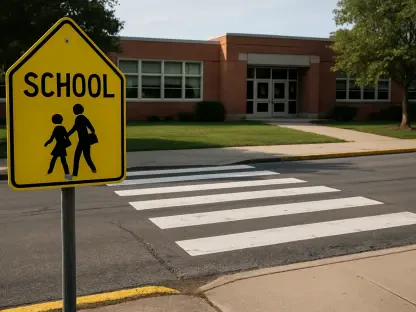Imagine a classroom where each student feels seen, heard, and motivated to succeed. This isn’t just a teacher’s wishful thinking; it’s a reality shaped by the quality of teacher-student relationships. In middle school, as students navigate the tumultuous transition from childhood to adolescence, these bonds become pivotal.
Understanding why some middle school students thrive while others struggle reveals the answer: robust teacher-student relationships provide vital support during this critical developmental period.
Erik Erikson’s developmental stages of Industry vs. Inferiority and Identity vs. Role Confusion illuminate the challenges faced by middle school students. At such a critical juncture, these preteens are developing competence, confidence, and grappling with their evolving identities. Teachers who recognize and address the nuanced needs of their students can make a significant impact.
Strong connections between teachers and students have transformative effects on academic performance and personal growth. When teachers show genuine care, students are more likely to develop confidence and engagement in their studies. For example, a supportive teacher may encourage a hesitant student to participate in class, thereby boosting their self-esteem and encouraging a more active, involved learning style.
Effective teacher-student relationships are proven to enhance motivation by addressing three primary areas: social-emotional needs, individual challenges, and engagement techniques. Teachers who understand the importance of these elements can create a supportive environment that meets each student where they are. Research indicates a significant correlation between teacher support and improved academic outcomes, highlighting the critical role of empathetic, attentive educators.
Restorative practices also play a crucial role in building a nurturing learning environment. Five specific strategies can create a positive classroom atmosphere: fostering a sense of community, promoting open dialogue, encouraging inclusiveness, ensuring mutual respect, and practicing fair conflict resolution. These practices help cultivate a supportive and respectful learning environment, enabling students to feel safe and valued.
Insights from prominent psychologists and educators underscore the effectiveness of strong teacher-student bonds. For instance, studies show that students with supportive teachers exhibit higher levels of engagement and achievement. Quotes from educators further solidify the importance of these relationships, emphasizing how deeply they can influence a student’s school experience and overall well-being.
Teachers can take practical steps to strengthen their relationships with students. Daily classroom practices, such as greeting each student individually, actively listening to their concerns, and creating opportunities for collaborative work, build rapport and trust. Exercises designed to improve empathy and understanding also contribute significantly to fostering a positive, respectful classroom climate.
In conclusion, the importance of fostering strong teacher-student relationships in middle school cannot be overstated. These bonds not only improve academic outcomes but also play a crucial role in students’ personal development. Educators who implement strategies to connect with their students create a nurturing environment where students feel supported and motivated to succeed. As teachers continue to build these relationships, they pave the way for a brighter, more resilient future for their students. Effective teacher-student relationships have been, and will continue to be, a cornerstone for educational success.









